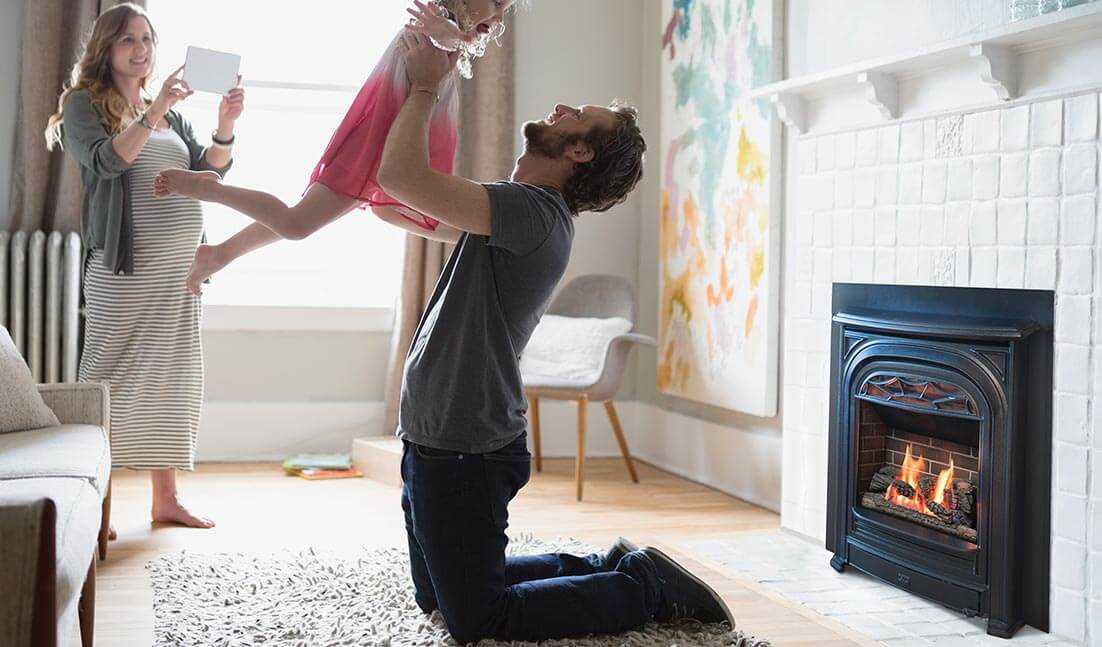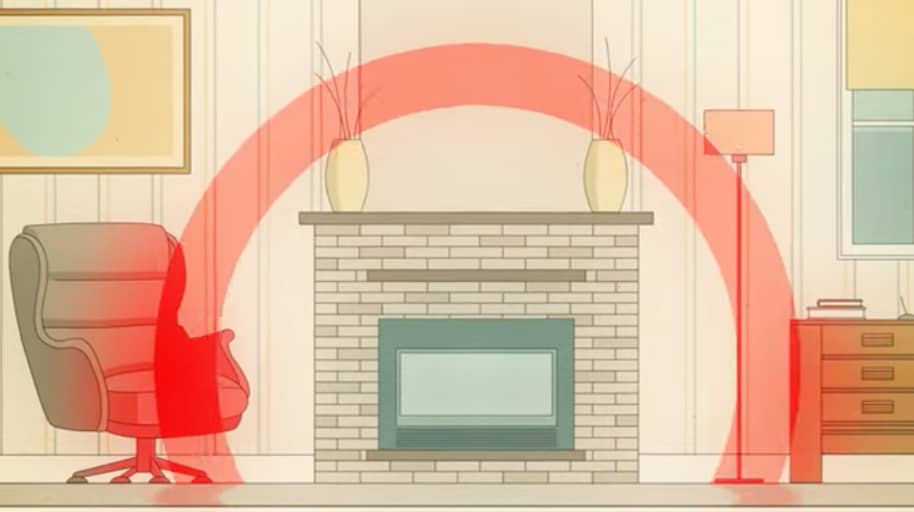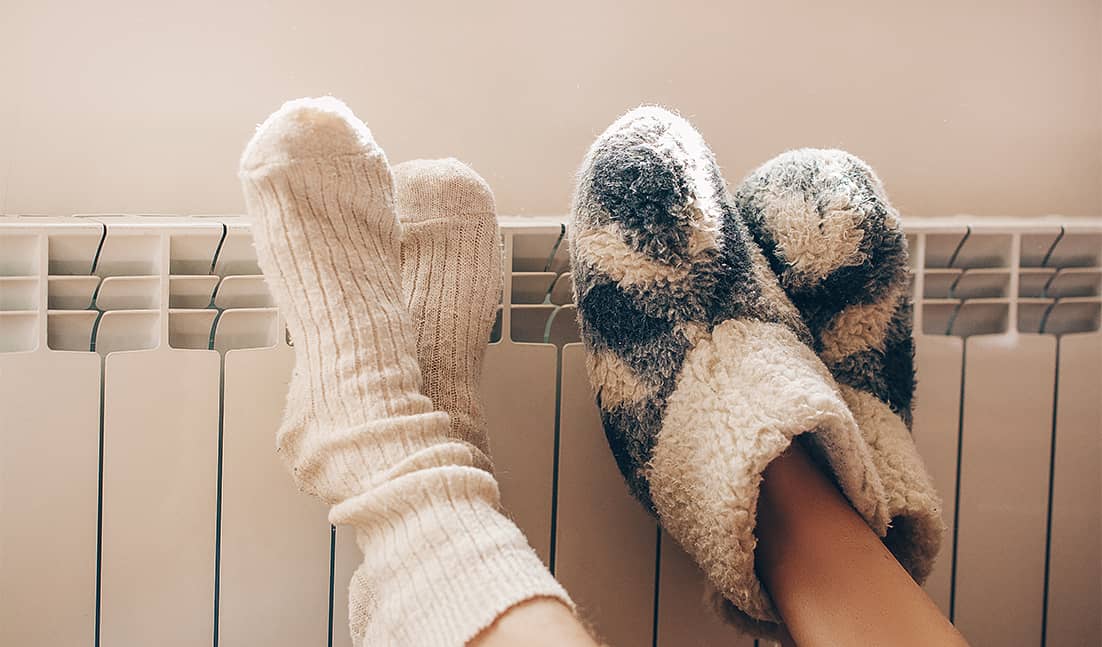Home > Fireplace Features > Zone Heating
Zone heating with a Valor delivers the perfect blend of radiant and convective warmth while being more economical and efficient. An efficient Valor zone heater puts warmth directly into the space you wish to heat with virtually no cycling losses.
With a Valor installed in one or more of your main living zones, you can enjoy increased comfort while reducing furnace usage in colder months or eliminating it during warmer Spring and Fall seasons. Our fireplaces allow you to take advantage of zone heating to deliver radiant and convective warmth to the spaces you frequent the most - a great alternative to central heating.
What is Zone Heating?
Forced air central heating systems distribute heated air from a central furnace unit through ducts to various points in the home. The furnace burners cycle on and off as often as 3-4 times per hour depending on the thermostat's setting and sensitivity. During average heating weather, furnace "on cycle" times may be relatively short, with the burners shutting down before peak efficiency is even reached. This results in reduced efficiencies through "cycling losses" (like a car's mileage in stop-and-go traffic).
Why Targeting Specific Areas Is Crucial
By targeting specific areas in your home that you frequent the most, you ensure getting the perfect blend of radiant and convective warmth – where you want it when you want it. Unlike traditional forced air central heating systems that distribute heated air through ducts, zone heating with a Valor gas fireplace requires no ducting or forced air. This makes it an economical and efficient heating solution in the long run.


Zone Heating Saves On Heating Costs
An efficient Valor gas fireplace zone heater puts warmth directly into the space you wish to heat with virtually no cycling losses. Valor heaters utilize special lightweight steel and ceramic components to heat up quickly and reach efficiency in minutes. With a Valor installed in one or more of your main living zones, you can enjoy increased comfort while reducing furnace usage in colder weather or eliminating it during warmer Spring and Fall seasons.
Compared To Traditional Heating
By contrast, regular forced air central heating systems require extensive ductwork and have high furnace gas inputs, ranging from 80,000 to 120,000 BTU/hr, sized to heat the home in the very coldest weather. These systems often lead to "cycling losses" and can necessitate overheating some parts of your home just to maintain comfort in frequently used areas.

